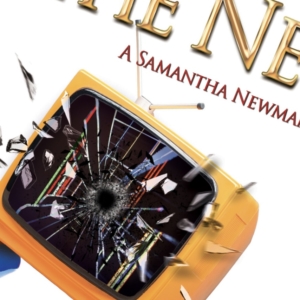 By Donnell Ann Bell
By Donnell Ann Bell
It never fails. I can be talking to friend Lois Winston via phone, topics ranging from world events to some mundane ailment we’re experiencing. Then always. . . always before we hang up, the next 15 minutes segue into critique partner Lois Winston. This is the point in which we discuss writing and what we’ve learned or experienced over twenty-plus years.
Let’s face it, publishing has exploded since the early 2000s from the statement that e-publishing isn’t a legitimate form of publishing to printing and mailing off our synopses and manuscripts, then waiting and waiting and hoping for “The Call.”
In this morning’s phone conversation, Lois and I discussed my hack (more on that in upcoming posts – the saga is interesting and educational, I promise you) and why Lois, a traditionally published author turned indy author and marketing guru will likely never be on social media or hire a personal assistant. As I listened to her very valid points not to enter this realm, I thought why should she? She does everything from writing, to hiring a narrator for her audio books, to designing and selling Anastasia Pollack merchandise herself! The woman is a machine!
Today’s phone call had us laughing, and somehow morphed into the importance of trusting our instincts. These instincts often lay dormant in the beginning of our careers because we haven’t yet learned or challenged the craft of writing. Further, so many experts (and many who think they are) stand ready to expound on how they do it.
One of the things I believe in is Fearless Creating. Am I suggesting never to take advice? Absolutely not. But what’s the point of writing if we don’t stay true to our vision, enjoy the process while we’re creating, and see what our imaginations and brains can come up with first?
I’ve witnessed authors taking a fine piece of writing, albeit a draft, in which the whole room applauded. An agent in the room requested a full. Later, when I saw the piece again, I hardly recognized it. Why did you change it, I asked. Oh, X had a problem with this. Y said it was too long, too short, the characters flat. Z suggested I write it this way.
This way is another person’s vision that usurps the creator. Doubt has a terrible way of worming into an author’s psyche from the moment we open a blank page. Further, there are so many outside forces these days willing to help us with our writing.
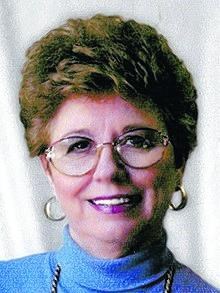
Author Sylvia Rochester
I had a dear friend who painted as well as wrote books. Author and Artist Sylvia Rochester, who passed in 2022, had a wonderful saying. It’s one I think about when I’m writing, tweak my work, screw it up, and can’t get it back again. “The First Stroke is the Freshest.”
If you think you have something brilliant but can make it better, I suggest keeping a draft file. That way you can compare the two later. How often do you write something in the evening, think this is garbage and delete it? Putting the text in a draft file, come morning, you may see things differently. I know I have.
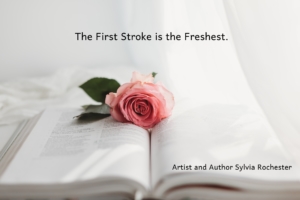
I call myself an experienced writer who still has much to learn. I enjoy critiquing with Lois and often do beta reads for other writers. Rarely do I suggest an author change an entire plot, or worse, try to “rewrite” it for them. It’s their story, their voice. I believe there should be a Hippocratic oath for Authors – Help but “Do no Harm.”
When I read, I focus on pacing, goal, motivation, and conflict. Do I like the author’s voice, and can I relate to the characters? I believe in critique partners and the oh-so-valuable-editor. Through it all, though, I’m grateful my muse is a formidable force. I’m also blessed with a stubborn streak.
What about you? Agree/disagree?
About the Author: Donnell Ann Bell writes both romantic suspense and multi-jurisdictional task force plots, keeping close tabs on her theme SUSPENSE TOO CLOSE TO HOME. Her single-title romantic suspense novels, The Past Came Hunting, Deadly Recall, Betrayed, and Buried Agendas, have all been Amazon e-book best sellers.
Traditionally published with Belle Books/Bell Bridge Books, Black Pearl, a Cold Case Suspense was her first mainstream suspense and book one of a series, and a Colorado Book Award finalist. Her second book in the series, Until Dead, A Cold Case Suspense, released in May of 2022 was voted best thriller in 2023 at the Imaginarium Celebration Conference in Louisville, Kentucky. Follow her on social media, sign up for her newsletter or follow her blog at https://www.donnellannbell.com

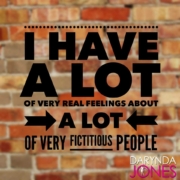 I first pondered this when I helped write the thriller Five Minutes to Midnight. The author was an international expert on terrorism, and not a native English speaker. To start with, he asked for help in naming the main character, who plied the same profession as he did. The hero was bold and dangerous. After playing with possibilities, I came up with Sartain. To my ears, it sounded like a good cross between the word “certain” and the ultimate tough guy, Satan. The author loved it.
I first pondered this when I helped write the thriller Five Minutes to Midnight. The author was an international expert on terrorism, and not a native English speaker. To start with, he asked for help in naming the main character, who plied the same profession as he did. The hero was bold and dangerous. After playing with possibilities, I came up with Sartain. To my ears, it sounded like a good cross between the word “certain” and the ultimate tough guy, Satan. The author loved it.

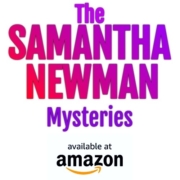
 By Donnell Ann Bell
By Donnell Ann Bell

 By Lois Winston
By Lois Winston
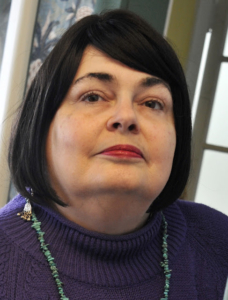 Following a Character into a Book by Linda Rodriguez
Following a Character into a Book by Linda Rodriguez By Lois Winston
By Lois Winston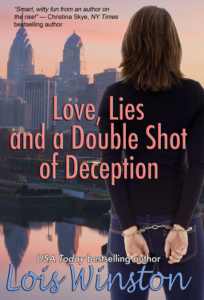 Years ago, I knew a woman who went to great lengths to project the ideal marriage. She constantly bragged about how much her husband loved her and what a perfect marriage they had. Then I learned the secrets behind the lies. She was carrying on an affair that her husband discovered when he tapped his own phone. Mr. and Mrs. Perfect Marriage were anything but. Although Love, Lies and a Double Shot of Deception isn’t about that marriage, it got me thinking about public persona versus private reality.
Years ago, I knew a woman who went to great lengths to project the ideal marriage. She constantly bragged about how much her husband loved her and what a perfect marriage they had. Then I learned the secrets behind the lies. She was carrying on an affair that her husband discovered when he tapped his own phone. Mr. and Mrs. Perfect Marriage were anything but. Although Love, Lies and a Double Shot of Deception isn’t about that marriage, it got me thinking about public persona versus private reality.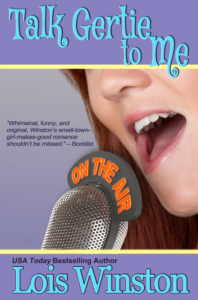 Ten years after I first had that dream, after attending countless monthly writers’ meetings and numerous workshops and conferences, I eventually got enough of a clue to sell my first book.
Ten years after I first had that dream, after attending countless monthly writers’ meetings and numerous workshops and conferences, I eventually got enough of a clue to sell my first book. 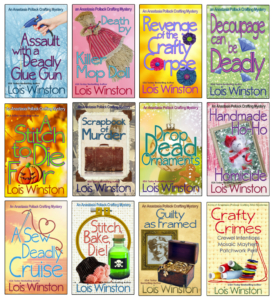 USA Today and Amazon bestselling and award-winning author Lois Winston writes mystery, romance, romantic suspense, chick lit, women’s fiction, children’s chapter books, and nonfiction under her own name and her Emma Carlyle pen name. Kirkus Reviews dubbed her critically acclaimed
USA Today and Amazon bestselling and award-winning author Lois Winston writes mystery, romance, romantic suspense, chick lit, women’s fiction, children’s chapter books, and nonfiction under her own name and her Emma Carlyle pen name. Kirkus Reviews dubbed her critically acclaimed  By Lois Winston
By Lois Winston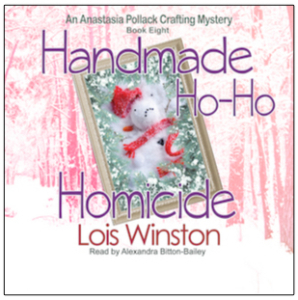
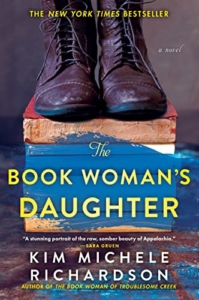
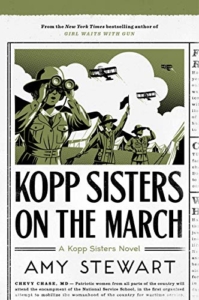 Not every book I read is worth mentioning. Several fell way short of expectations. However, there were two books that I thoroughly enjoyed:
Not every book I read is worth mentioning. Several fell way short of expectations. However, there were two books that I thoroughly enjoyed: 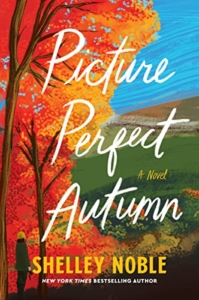 One of the perks of being a published author is getting to read some books before they hit bookstore shelves. I had the absolute pleasure of losing myself in advance reading copies of two books that I highly recommend. If you enjoy women’s fiction, you won’t want to miss the recently released
One of the perks of being a published author is getting to read some books before they hit bookstore shelves. I had the absolute pleasure of losing myself in advance reading copies of two books that I highly recommend. If you enjoy women’s fiction, you won’t want to miss the recently released 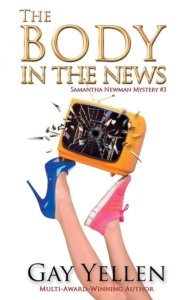 If romantic amateur sleuth mysteries are more your speed, you’ll want to read
If romantic amateur sleuth mysteries are more your speed, you’ll want to read 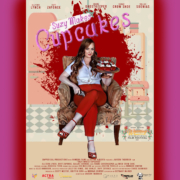
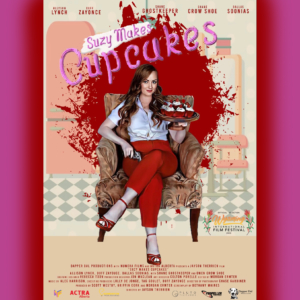 Let’s Make a Movie!
Let’s Make a Movie! Successes so Far
Successes so Far Bethany Maines is the award-winning author of action-adventure and fantasy tales that focus on women who know when to apply lipstick and when to apply a foot to someone’s hind end. She participates in many activities including swearing, karate, art, and yelling at the news. She can usually be found chasing after her daughter, or glued to the computer working on her next novel (or screenplay). You can also catch up with her on
Bethany Maines is the award-winning author of action-adventure and fantasy tales that focus on women who know when to apply lipstick and when to apply a foot to someone’s hind end. She participates in many activities including swearing, karate, art, and yelling at the news. She can usually be found chasing after her daughter, or glued to the computer working on her next novel (or screenplay). You can also catch up with her on 


